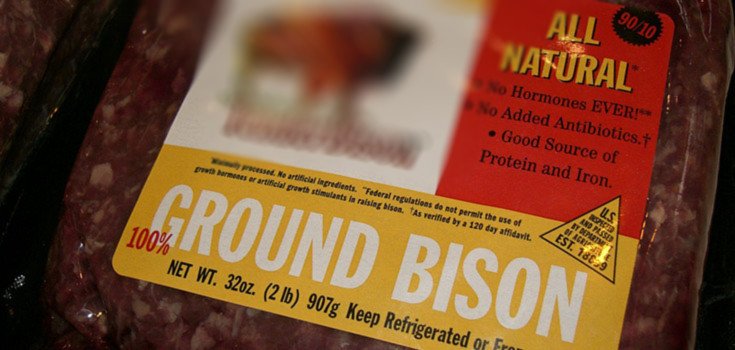Bison is the Healthier Alternative to Beef and Consumers Love it

For meat eats, beef is out and bison is in as consumers look for a healthier alternative to what they normally stick between a hamburger bun.
Bison is grass-fed and is leaner than beef while still providing an awesome taste. The meat also has lower cholesterol and fewer calories than beef. The former niche item is becoming more popular – and more expensive – in restaurants and grocery chains around the nation, including Whole Foods Market, The Kroger Co., and Costco Wholesale Corp. The demand for bison is part of American’s move toward organic foods and away from rather disgusting factory-farming methods that account for most of the protein eaten in the U.S. [1]
“The consumer today doesn’t trust the food industry,” said Roger Gerber, chief executive officer of Blackwing Quality Meats, a U.S. distributor of bison meat. “They can feel comfortable to know it doesn’t have hormones, it doesn’t have antibiotics.”
More than 500,000 bison currently roam North America, says Colorado processor Great Range Brand Bison. Thanks to private ranchers, the booming population is considered a huge conservation victory. Hunting almost put the giant beasts into extinction in the late 1800’s, when fewer than 1,000 of them existed. By the 1970’s, the species had made such a dramatic comeback that they started to be sold for meat.
Restaurant chain Eddie Merlot’s introduced bison to its menu 5 years ago as the demand for healthier food options increased. The Canadian Bison Association says one of the chain’s 6-oz. filets has fewer than 200 calories, one-third less fat than beef, and the animals are raised without steroids or chemical residue. The animals dine primarily on forage.
The price of bison has doubled in the last 5 years, but so too has the price of other forms of protein, especially pork and beef. As a result, consumers are willing to pay a bit more for a healthier cut of meat. Ribeye bison steaks rose 17% to an average of $31.76 per pound in August compared with a month earlier. That’s more than three times the price of a boneless beef ribeye.
Sources:
[1] Bloomberg
